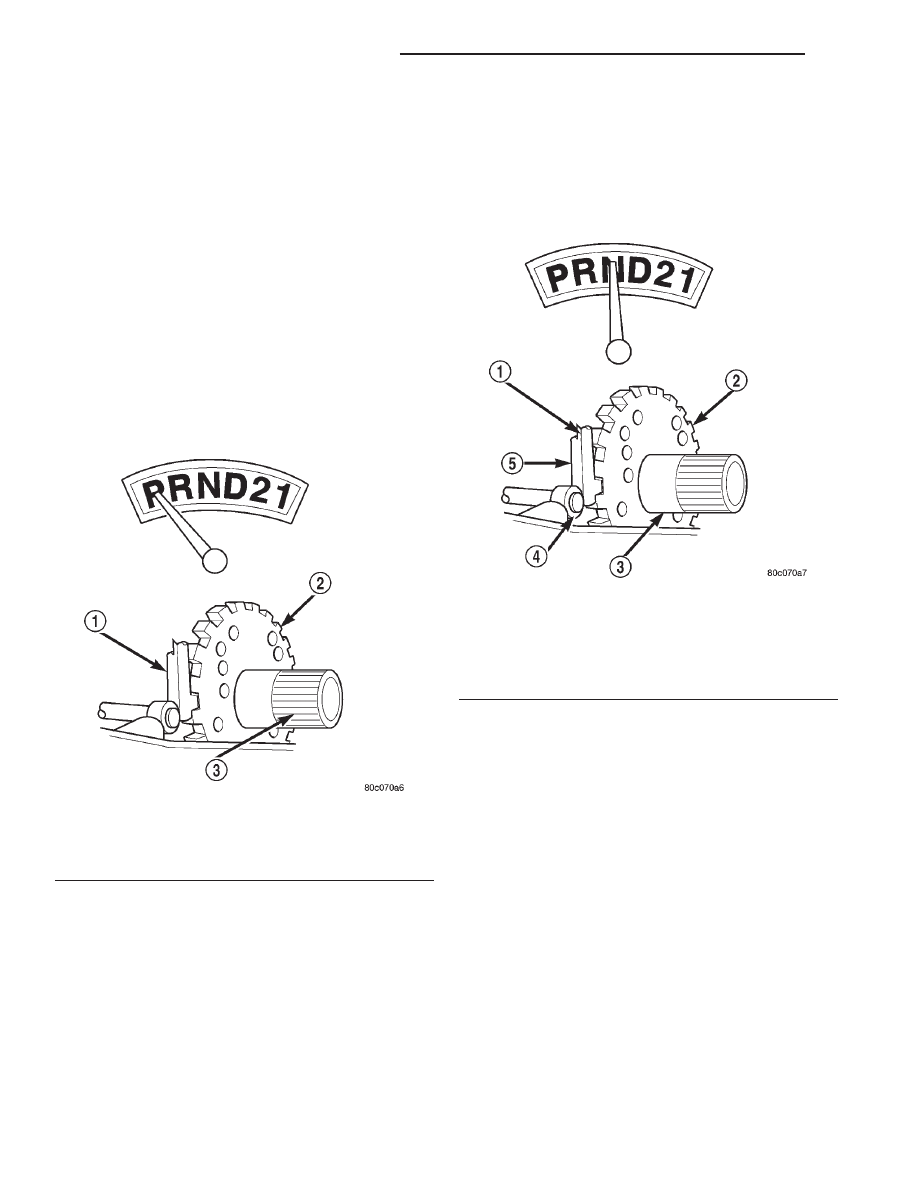Jeep XJ. Manual - part 389

PARK POWERFLOW
As the engine is running and the crankshaft is
rotating, the flexplate and torque converter, which
are also bolted to it, are all rotating in a clockwise
direction as viewed from the front of the engine. The
notched hub of the torque converter is connected to
the oil pump’s internal gear, supplying the transmis-
sion with oil pressure. As the converter turns, it
turns the input shaft in a clockwise direction. As the
input shaft is rotating, the front clutch hub–rear
clutch retainer and all their associated parts are also
rotating, all being directly connected to the input
shaft. The power flow from the engine through the
front–clutch–hub and rear–clutch–retainer stops at
the rear–clutch–retainer. Therefore, no power flow to
the output shaft, occurs because no clutches are
applied. The only mechanism in use at this time is
the parking sprag (Fig. 3), which locks the parking
gear on the output shaft to the transmission case.
NEUTRAL POWERFLOW
With the gear selector in the neutral position (Fig.
4), the power flow of the transmission is essentially
the same as in the park position. The only opera-
tional difference is that the parking sprag has been
disengaged, unlocking the output shaft from the
transmission case and allowing it to move freely.
Fig. 3 Park Powerflow
1 – LEVER ENGAGED FOR PARK
2 – PARK SPRAG
3 – OUTPUT SHAFT
Fig. 4 Neutral Powerflow
1 – LEVER DISENGAGED FOR NEUTRAL
2 – PARK SPRAG
3 – OUTPUT SHAFT
4 – CAM
5 – LEVER
21 - 92
AUTOMATIC TRANSMISSION—30RH
XJ
DESCRIPTION AND OPERATION (Continued)